No Witches Were Burned in Salem
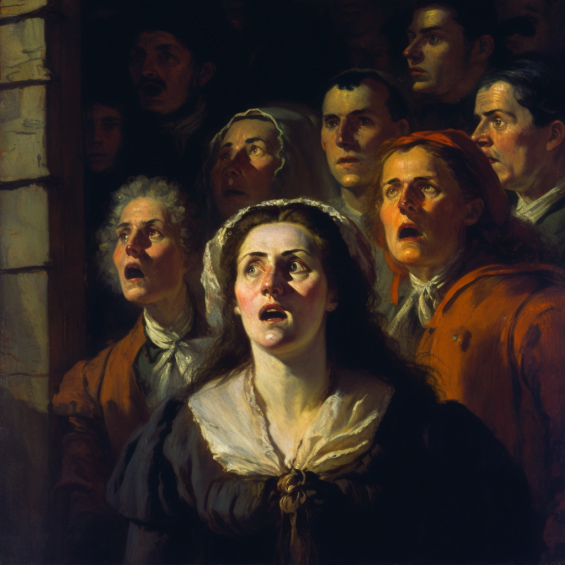
The Salem witch trials were a series of hearings and prosecutions of people accused of witchcraft in colonial Massachusetts from 1692 to 1693. During this time, over 200 people were accused and 20 were executed.
Contrary to popular belief, none of the accused witches were actually burned at the stake. This method of execution was more commonly used in Europe, but it was not a practice in colonial America. Instead, the majority of accused witches were jailed and put on trial. Many were found guilty and sentenced to death by hanging.
President Zachary Taylor Died From Eating Cherries

Zachary Taylor, the 12th president of the United States, was born in Virginia in 1784. He served in the military for most of his life, successfully leading troops in many battles, including the Mexican-American War, which he won. Taylor took office as president in 1849, and his brief presidency was marked by his tough stance on slavery. Despite being a Southerner himself, he opposed the expansion of slavery into western territories, causing tension with the slaveholding states.
On July 4, 1850, Taylor attended a celebration where he consumed a large number of cherries and drank milk. He became ill the next day, suffering from severe nausea, vomiting, and diarrhea. Doctors were called, but they were powerless to save him, and he passed away on July 9, at just 65 years old. While it's never been conclusively proven that Taylor's death was caused by eating cherries, it remains a popular theory. However, some historians believe that he may have actually contracted cholera from contaminated water or other sources.
The Voynich Manuscript

The Voynich Manuscript is an enigmatic document that has puzzled scholars for centuries. Despite all the efforts made in decoding the text, the manuscript remains shrouded in mystery. It was discovered in 1912 by a rare book dealer named Wilfrid M. Voynich in a box of manuscripts obtained from a Jesuit College in Italy. The book is made of vellum and contains pages of text, illustrations, and diagrams. It has been carbon-dated to roughly between 1404 and 1438, during the Renaissance period.
The book has been the subject of much controversy over the years, with some experts claiming that it is a hoax or a forgery. Others believe that it was written by an alchemist or magician seeking to keep his knowledge hidden. Despite the mysteries that surround it, the Voynich Manuscript has remained one of the most enigmatic manuscripts in history.
The Shortest War in History Lasted 38 Minutes!

The shortest war in recorded history took place between the British Empire and the Sultanate of Zanzibar on August 27, 1896, lasting a mere 38 minutes. This conflict, known as the Anglo-Zanzibar War, arose due to tensions over the succession of the Sultan of Zanzibar.
At 9:00 a.m., British warships positioned themselves near Zanzibar's capital, where they bombarded the palace and the ruling party's offices. Within a remarkably brief span of 38 minutes, the Zanzibari resistance collapsed, resulting in the deaths of around 500 Zanzibari soldiers and civilians. On the other hand, the British suffered minimal casualties, with only one sailor being injured.
Juliana, the Great Dane, Saved WWII

During World War II, many animals played important roles in the war effort, including horses, dogs, and pigeons. However, one particularly notable animal was a Great Dane named Juliana. In the midst of an air raid, an incendiary bomb landed in the yard where Juliana lived. Despite being frightened, the Great Dane quickly sprang into action and urinated on the bomb, extinguishing the flames and preventing further damage or harm.
As a result of her bravery, Juliana was awarded the Blue Cross Medal, an honor typically bestowed upon animals who have shown exceptional courage and loyalty in the face of danger. Her story became a symbol of the courage and determination that animals brought to the war effort, and inspired many people to view animals not just as pets or companions, but as valued members of society.
Great Depression Dance Marathons

During the Great Depression in the 1930s, dance marathons were a popular form of entertainment and a way for people to earn money. These endurance contests involved couples dancing continuously for hours, even days at a time. The winning couple would be the last ones standing and awarded a cash prize.
Dance marathons were not just a way to win money, but also a way to provide basic necessities like food and shelter for financially unstable couples. Participants would receive food and a place to sleep during the event, giving them a temporary reprieve from their difficult lives.
President Albert Einstein

Albert Einstein is widely regarded as one of the most brilliant minds of the 20th century, having developed the theory of relativity and contributed significantly to the advancement of physics. However, many people might not know that he was also offered the presidency of Israel in 1952 following the death of the country's first president, Chaim Weizmann.
Despite being Jewish, Einstein declined the offer, citing his lack of experience in dealing with people and exercising official functions. This was a humble acknowledgement of his area of expertise being restricted to the scientific domain. Additionally, Einstein never actually visited Israel and had only a limited involvement with the country, despite being a prominent figure in the Zionist movement.
The Ban on Pie

Pie has a long and interesting history dating back to ancient civilizations like the Greeks and Romans who made pies as a way to preserve food for later consumption. Fast forward to the 16th century in England where pie became a quintessential dish, enjoyed by monarchs and commoners alike. Pies were filled with various meats, fruits, and vegetables and were often elaborately decorated with intricate pastry designs.
But in 1644, pie lovers were in for an unexpected shock. English statesman Oliver Cromwell declared pie eating a pagan form of pleasure and banned it altogether. Cromwell, who was a strict Puritan, believed that the enjoyment of pie distracted people from their religious duties.
The Most Successful Pirate in History Was a Courtesan Named Ching Shih
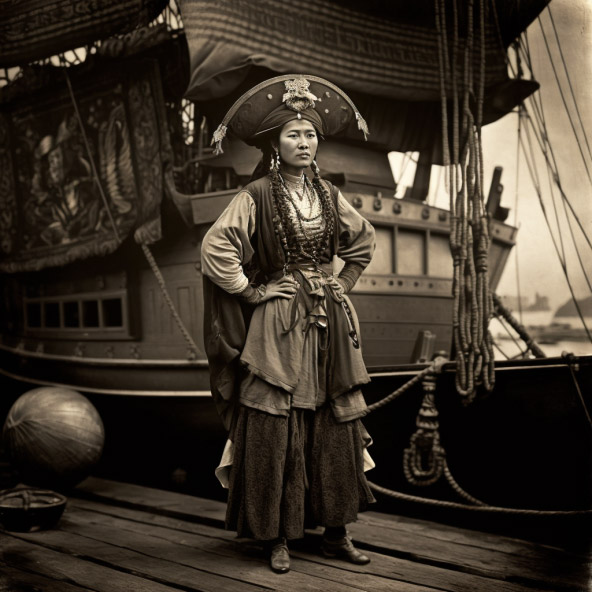
Ching Shih is considered the most successful pirate to ever live. She was born in Guangdong province, China, in 1775 and became a courtesan in Canton. At the age of 26, she was captured by the Commander of the Red Flag Fleet, Cheng I, who married her and made her an equal in his pirate empire.
In 1810, at the age of 35, Ching Shih retired from piracy and returned to Guangzhou with her fortune. She died peacefully at the age of 69. Her legacy still lives on today, and her story serves as a reminder of the power and influence of women in history.
"The Avengers" are Not Just Super Heroes, They Were Also Jewish Assassins
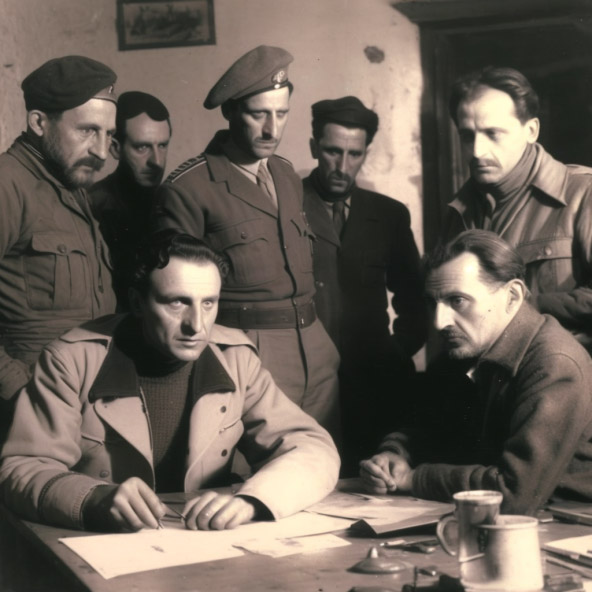
The Avengers, also known as Nakam, was a group of Jewish resistance fighters that formed after World War II. The group was made up of Holocaust survivors who were determined to seek justice for the atrocities committed against their people during the war. Their mission was to hunt down and assassinate war criminals who escaped prosecution.
They sneaked into the prison camp kitchens and poisoned the bread with arsenic. The plan was to kill all the prisoners, but they underestimated the amount of poison needed to kill so many people. As a result, only a handful of prisoners died, and the rest were left with severe stomach pains and diarrhea.
Cleopatra Wasn't Actually Egyptian!

Cleopatra is one of the most fascinating figures in history, known for her beauty, intelligence, and power. However, many people are surprised to learn that she was not actually Egyptian. In fact, Cleopatra was Greek, born in Alexandria in 69 BCE, and a descendant of Alexander the Great's Macedonian general Ptolemy.
Cleopatra is remembered for many things, including her romantic relationships with Julius Caesar and Mark Antony, her intelligence and political savvy, and her tragic end. Despite her ultimately unsuccessful attempts to preserve her kingdom and prevent Roman domination, she remains a symbol of power and beauty. Another mindblowing fact is that Cleopatra was born closer in time to the moon landing than to the building of the pyramids in her very own back yard. That's how old the pyramids are!
Napolean Bonaparte Was Attacked by Bunnies

Napoleon Bonaparte was one of the most famous conquerors in history, known for his military campaigns and political reforms. In 1807, he requested a rabbit hunt to be arranged for himself and his men in Fontainebleau, France. Hundreds of rabbits were brought in cages to be released and hunted. However, as the rabbits were set free, they didn't run away in fear as expected. Instead, they charged at the group of hunters, led by the bold and fearless Napoleon himself.
The bunny attack on Napoleon Bonaparte may seem like a funny and insignificant event, but historians suggest that it might have been a warning sign of his future defeat. Napoleon was at the height of his power at the time of the bunny incident, and the unexpected attack might have symbolized the beginning of his downfall. Regardless of its significance, the bunny attack remains a fascinating and little-known detail of Napoleon's life.
Abraham Lincoln is in the Wrestling Hall of Fame

Abraham Lincoln, the 16th President of the United States, was known for his leadership during the Civil War and for his famous Emancipation Proclamation. But there's something else that historians and wrestling fans alike may find surprising about this American icon - he's in the wrestling hall of fame.
It's true: Lincoln was one of the most successful wrestlers in his time. Standing tall at 6'4", he had an impressive record with only one loss among the roughly 300 matches he competed in. Wrestling was a common sport in the country during the 1800s, and Lincoln's skill on the mat helped him gain recognition in New Salem, Illinois, as an elite fighter.
President Andrew Jackson Had Cursing Parrot Named Polly

Andrew Jackson was the seventh president of the United States and a major figure in American history. Known for his tough demeanor and fiery temper, he was also a lover of pets, including a pet parrot named Polly. Jackson reportedly taught the bird to curse like a sailor, which was no small feat considering the limited menu of words birds can typically learn.
According to legend, Polly's foul mouth caused quite a stir at Jackson's funeral. The bird refused to stop cursing, and had to be removed from the service so as not to offend the assembled mourners. The story has become part of the popular lore surrounding Jackson and his eccentric personality.
People Used Potato Sacks to Make Dresses During the Great Depression

During the Great Depression, the economic hardship compelled people to be resourceful and creative with day-to-day living. One such phenomenon was the trend of making clothes out of food sacks. From flour to sugar and even animal feed, the burlap bags in which these products were packaged were repurposed as fabric for dresses, shirts, and even underwear. It was a way to save on clothing expenses while also making a statement with the unique, printed designs.
One of the most interesting aspects of this trend was the response from food distributors. To capitalize on this new market, they began to produce their sacks in more colorful and trendy designs. For example, during World War II, women sewed uniforms for their family members out of potato sacks featuring patriotic motifs like eagles and flags.
Victorians Took Pictures With Their Dead Family Members

During the Victorian era, death was an ever-present part of life, and people had to find ways to cope with the reality of it. One such way was to take post-mortem photographs of their loved ones. This practice was not uncommon and was seen as a way to memorialize the departed.
Post-mortem photography was a time-consuming and expensive process, so only those who could afford it could have such images taken. Families often dressed the deceased in their finest clothes and posed them as if they were asleep or still alive. These photographs were then kept as mementos to commemorate the person's life and remember them in death.
Charles Darwin Invented the Rolly Chair
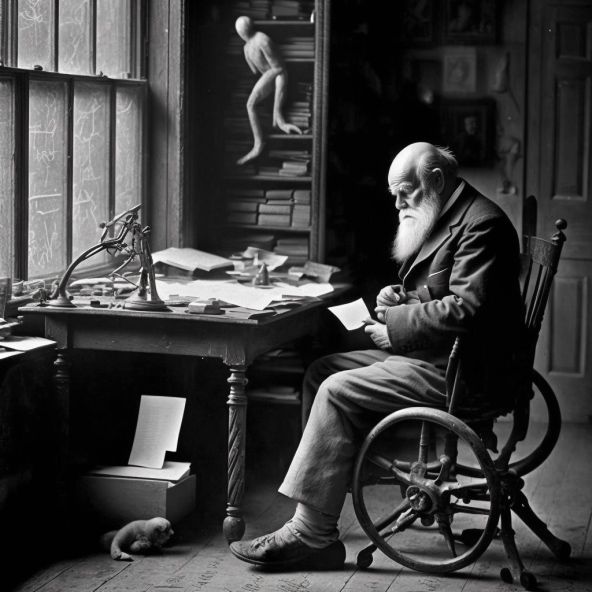
Charles Darwin, a legendary naturalist known for his groundbreaking theory of evolution, was not only an innovator in scientific thought but also in furniture design. While most people are familiar with Darwin's significant contributions to the field of biology, few are aware that he invented his own wheeled office chair.
The chair was a reflection of Darwin's brilliant mind and his constant desire to improve his work efficiency. As he spent long hours in his study, surrounded by books, notes, and specimens, he noticed that he wasted valuable time walking from one spot to another. To eliminate this unnecessary movement and optimize his productivity, Darwin attached wheels to his armchair, and that's how the first wheeled office chair came into being.
Elizabeth Báthory Was the First Woman Serial Killer

Elizabeth Báthory was born into an aristocratic family in Hungary in 1560. She grew up at Ecsed Castle and was known for her beauty and intelligence. In 1575, she married Ferenc Nádasdy, a member of another powerful Hungarian family, and they settled at Csejte Castle. It wasn't until after her husband's death in 1604 that she became known as the Blood Countess.
According to legend, Báthory believed that bathing in the blood of young women would keep her youthful and beautiful forever. She was accused of torturing and killing hundreds of young girls, most of whom were servants in her castle. The stories of her crimes are gruesome and involve beatings, burnings, and mutilation.
Pineapples Were Once Fashionable Status Symbols
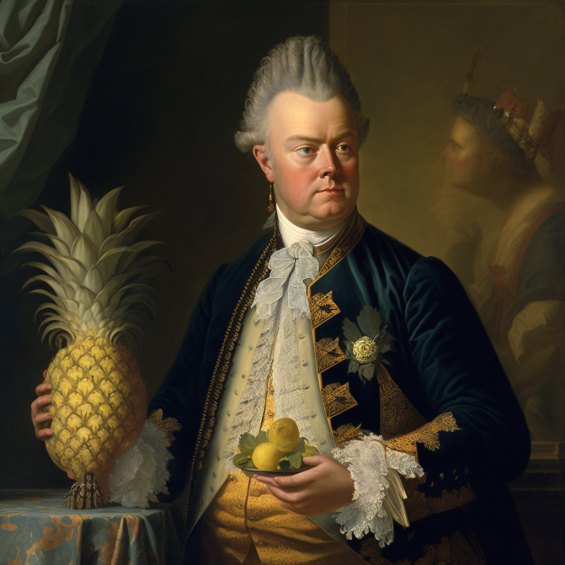
The history of pineapples dates back to the Caribbean, where they were first discovered and cultivated by indigenous people. When Christopher Columbus arrived in the Caribbean in 1493, he encountered the fruit and named it "piña de Indes" due to its resemblance to a pinecone. The fruit then spread to other parts of the world, including Europe, where it quickly became a coveted luxury item for the wealthy.
During the 18th century in England, pineapples were a symbol of wealth and hospitality. They were so rare and expensive that they could only be grown in greenhouses, making them a status symbol for those who could afford to own one. Pineapples became a popular decorative item, appearing on everything from furniture to wallpaper to tea sets.
Ancient Greeks Thought Red Heads Were Vampires

Redheads have been a subject of fascination and superstition for centuries, particularly in Ancient Greece where they were believed to turn into vampires after death. This belief stemmed from the fact that redheads have very pale skin that is sensitive to sunlight, and the Mediterranean Greeks with their olive skin found this unusual. The superstition was so strong that redheaded children were often left outside to sleep in order to help them with acclimating to the sun.
Despite the myths and beliefs surrounding redheads, they have actually been present throughout history and have made significant contributions to various fields. For instance, Henry VIII is one of the most famous redheads in history, and his red hair is often depicted in portraits. Redheads are also known to possess a genetic mutation that affects pain sensitivity, which means they may need more anesthesia during surgery than other individuals.
Table Cloths Were Once Used As Communal Napkins

Initially, tablecloths were used to cover tables and protect them from scratches and spills. However, as early as the Middle Ages, tablecloths also served another purpose - as communal napkins. Guests would use the tablecloth to wipe their hands, faces, and even mouths between bites. It was only after the Renaissance that individual napkins became more commonplace.
Today, tablecloths are mostly used for decorative purposes, adding color and style to dining rooms and special events. They are available in a wide variety of fabrics, from linen to cotton to silk, and in a range of patterns and colors.
The Boston Molasses Disaster

The Boston Molasses Disaster of 1919 is a largely forgotten tragedy that left a devastating impact on the city of Boston. The tank that exploded was owned by Purity Distilling Company, who used molasses to produce industrial alcohol. However, the tank was poorly designed and maintained, despite numerous complaints from local residents who had noticed leaks in the tank prior to the explosion.
The cleanup effort was grueling, as molasses is incredibly difficult to remove from the streets and buildings. It took months for the streets to be fully cleaned, and some parts of the city still smelled of molasses for years after the disaster. The incident led to new regulations requiring companies to adhere to stronger safety standards and highlighted the importance of proper construction and maintenance of industrial tanks.
Mummy Supplements
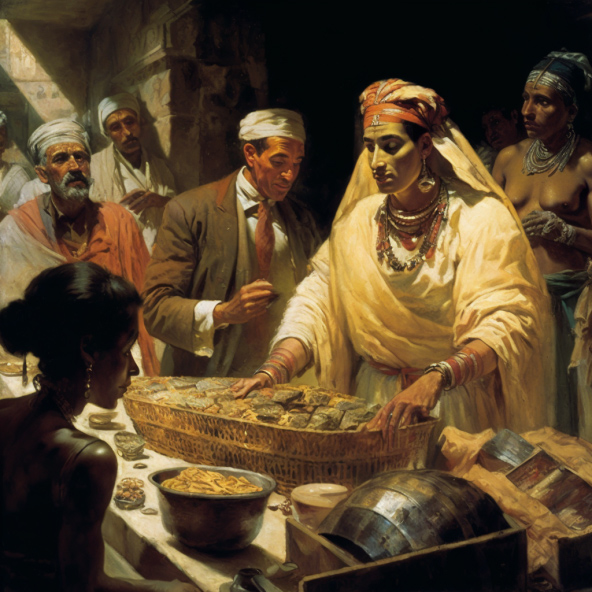
Cannibalism is a taboo practice that has been condemned throughout human history. However, in the 16th century, there was a peculiar trend among the European nobility and upper-class that involved consuming human remains, especially Egyptian mummies. This phenomenon was influenced by the belief in the medicinal properties of human flesh and bones.
In that time, people thought that mummification could preserve the deceased's vital energy and medicinal properties. The rich elites believed that by ingesting powdered mummy, they could cure a variety of diseases, from headaches to stomach pains, to epilepsy. These beliefs were fueled by the writings of famous physicians such as Paracelsus, who claimed that mummies encapsulate the vital powers of nature that could be harnessed for therapeutic purposes.
William Shakespeare Said the First "Yo Momma Joke"

William Shakespeare is widely regarded as one of the greatest playwrights in history. He is known for his works such as Hamlet, Romeo and Juliet, and Macbeth, among others. However, not many people know that Shakespeare is also credited with originating the popular “yo momma” joke.
This joke appears in Shakespeare’s play Titus Andronicus, which was first performed in 1594. In one scene, one of the characters named Chiron says to another character named Aaron, “Thou has undone our mother.” Aaron then responds by saying, “Villain, I have done thy mother.”
Hollywood Left New York to Get Away from Thomas Edison

Hollywood is an iconic place known for its glitz and glamour, but many people might not know that it was founded due to legal strife. In the early 20th century, Thomas Edison held patents on many of the technological advancements used to create motion pictures. Film companies on the East Coast, including the future Paramount Pictures, were paying high fees to Edison to use his equipment and actors, but Edison also had control over the production and distribution of the films made with his equipment.
To escape these fees and restrictions, independent filmmakers began to look for a new location to make films. The West Coast proved to be an ideal destination, as the judges in California were less supportive of Edison and his patents. Filmmakers could produce films without fear of legal repercussions and without paying exorbitant fees.
Galloping Gators

The Sahara Desert, one of the hottest and most desolate places on earth, was once a thriving ecosystem full of lush flora and fauna. Dating back to around 100 million years ago, evidence shows that the Sahara was inhabited by large and ferocious predators, including crocodiles.
What might surprise many is that these ancient crocodiles had the ability to venture on land with highly developed legs. These legs were capable of propelling them at breakneck speeds, allowing them to outrun predators and prey alike.
The National School Lunch Program Served the Draft

The National School Lunch Program (NSLP) was established in the United States in 1946, following the end of World War II. Although many attribute its creation to concerns about children’s nutrition, the roots of the program were actually tied to military readiness. During the war, the government learned that many potential soldiers were too malnourished to serve. In response, policymakers proposed a government-funded program that would provide meals to school-age children across the country. By feeding children in school, officials believed they could both combat childhood malnutrition and promote a healthier pool of potential soldiers for the U.S. military.
. Today, more than 30 million American students participate in the program, which provides free or reduced-price meals to children from low-income households. Researchers have found that the NSLP contributes to improved academic performance and better health outcomes for participants.
Asian Elephant Torture

Death by elephant was a type of execution that was once popular in ancient Asia. This form of punishment involved using trained elephants to kill people. Elephants were seen as formidable animals that could easily crush bones and limbs, making them the perfect tool for such a gruesome act.
Elephants were trained to break bones slowly, causing severe pain before ultimately killing the victim. They could also be taught to twist off limbs or even execute people using large blades fitted to their tusks. The use of elephants for such brutal acts was seen as a way of instilling fear and deterring others from committing crimes.
The Krakatoa Blast

The Krakatoa volcanic eruption in 1883 was one of the most devastating natural disasters in recorded history. Located in Indonesia, Mount Krakatoa had been dormant for over 200 years before it erupted with a force equivalent to 200 megatons of TNT, causing widespread devastation and loss of life.
The sound produced by the eruption was so loud that it ruptured the eardrums of people within a 40-mile radius and could be heard more than 3,000 miles away. It was recorded as the loudest sound ever heard in modern history. The sound wave traveled around the world four times and was heard in places as far away as Western Australia and South America.
Utensils are the Devils Hands
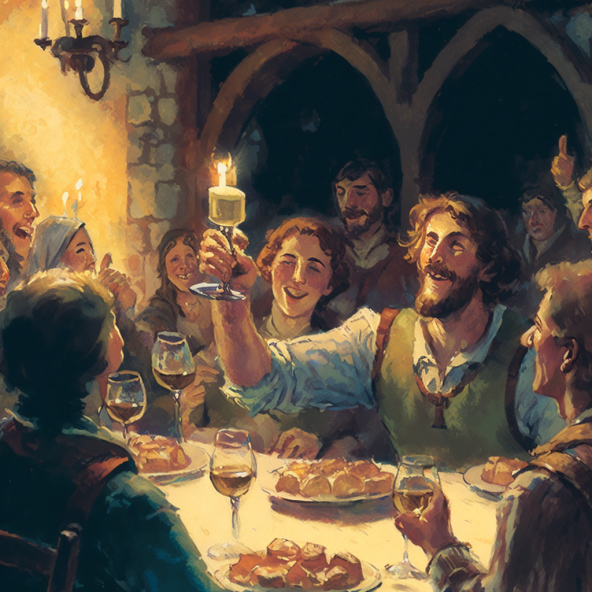
The use of forks as eating utensils can be traced back to ancient Egypt, Greece, and Rome, but it wasn't until the Middle Ages that they began to gain popularity in Europe. However, the use of forks was initially met with resistance and seen as sacrilegious.
This belief stemmed from the idea that God had given us hands to eat with, and to use a fork was to reject that gift. In fact, some religious leaders went as far as to call forks "devil's instruments" and claimed that they caused diseases such as leprosy and plague.
Pope Gregory IX Declared that Cats were Demonic

In the Middle Ages, cats became associated with witchcraft and devil worship. Pope Gregory IX believed that cats were demonic creatures and ordered their extermination. This led to a decline in the cat population in Europe, which some historians believe contributed to the spread of the bubonic plague.
The black death swept across Europe in the 1300s, killing millions of people. Without cats to hunt and kill rats, the population of rodents increased, and they were able to spread the disease more easily. It wasn't until the 1800s that cats began to regain their popularity as household pets. It was during this time that cat shows and breeding programs began to emerge.
Suspicious Dentures

Dentures have a long and somewhat gruesome history. Before modern materials and manufacturing techniques, dentists would craft dentures out of whatever materials they could find. In the centuries before the Industrial Revolution, human teeth were a valuable resource for denture makers.
In the early 19th century, dentists in Europe would often turn to the battlefields to gather the teeth they needed. After the Battle of Waterloo, which involved a massive number of casualties, many dentists journeyed to the site of the conflict to collect teeth from fallen soldiers.
Mayan Turkey Gods

Turkeys have been an integral part of human civilization for centuries. The wild turkey is native to North America and was first domesticated by the indigenous people who used them for meat, feathers, and cultural ceremonies. The Aztecs, for example, used turkeys in their religious ceremonies, and the native people of Mexico and Central America believed turkeys to be an embodiment of their gods. In fact, the Mayans of Mexico and Central America considered turkeys one of the highest-ranking birds and believed that turkeys could communicate between the human world and the spirit world.
Turkeys were first introduced to Europe in the 16th century, where they became a popular delicacy in royal courts. The English named the turkey after the country, Turkia, which they believed was the bird’s origin. In the United States, turkeys became an important food source in the 1800s, and the commercial turkey industry began in the 1920s. Today, the turkey industry is a multibillion-dollar industry, and turkey is one of the most popular meats in the United States.
Baboons on the Railroad

The South African railway company, in the late 1800s, was facing a unique problem - the baboons in the area were known for their exceptional agility and skill at climbing trees. The company recognized that these same skills could be put to use in climbing and inspecting telegraph poles along the railway lines that ran through the rugged terrain between Cape Town and Port Elizabeth. And so, in 1919, a baboon named Jack was hired as an official employee of the railway company, becoming the first ever animal to be employed for such work.
Jack, a chacma baboon, proved to be a quick learner and within a few short weeks, he had mastered the art of climbing and inspecting the telegraph poles. He was given a uniform and a salary paid in the form of food which included a daily bottle of beer after work. Over the next nine years, Jack worked diligently on the railway line, earning a reputation as a reliable and efficient worker who never made a single mistake.
Egyptians Slept on Rocks
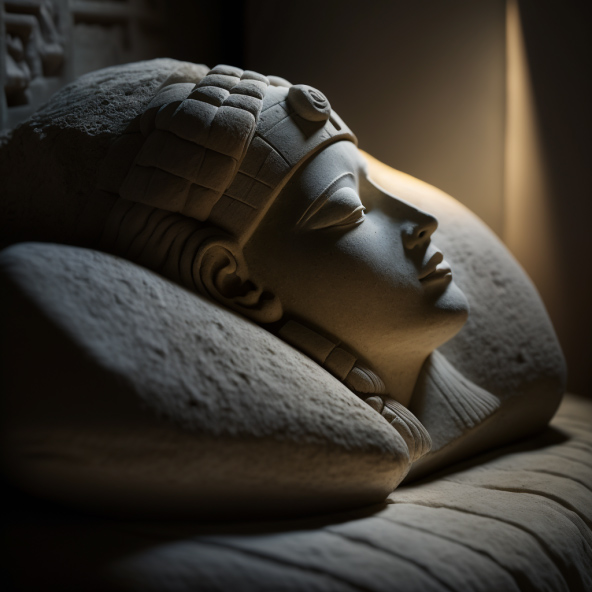
The use of stone slabs as pillows in Ancient Egypt dates back to around 5000 BCE. These stone pillows were made from a variety of materials like limestone, basalt, and granite. They had a curved shape which provided support to the neck while keeping the head elevated.
The Ancient Egyptians believed that the head was the seat of the soul and the home of a person's intelligence and emotions. Hence, their treatment of the head was of great importance, and the use of stone pillows was seen as a way to protect the head and ensure a good night's sleep. They also believed that the stone's coolness could help reduce swelling and inflammation.
The Roman Horse King

Gaius, better known as Caligula, was one of the most infamous Roman emperors. His reign from 37-41 AD was marked by extravagance, depravity, and cruelty. One of the most shocking stories associated with Caligula is that he appointed his beloved horse, Incitatus, as a senator.
The story of Incitatus is somewhat murky and its veracity has been debated by historians. However, it is known that Caligula doted on his horse and lavished it with luxurious accommodations. The marble stall and jeweled collar are mentioned in ancient sources, as well as the plan to make Incitatus a consul.
Alexander the Great Was Buried Alive
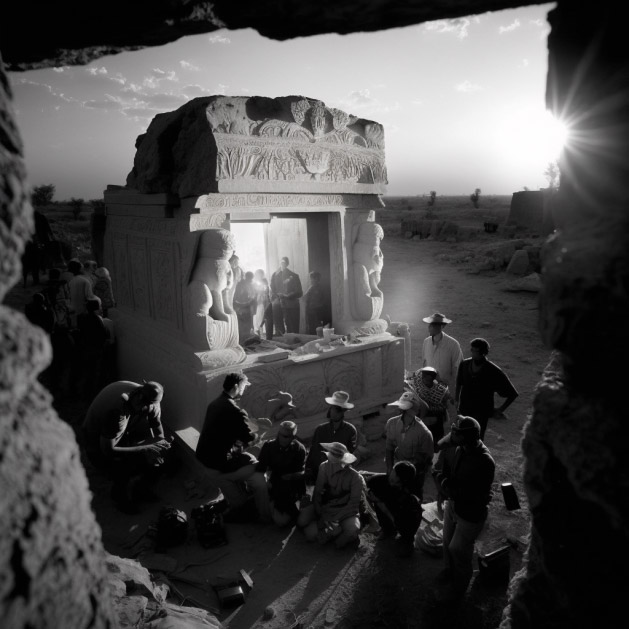
Alexander the Great is one of the most legendary figures in history, a warrior king who conquered vast territories, spreading Hellenistic culture throughout much of the known world. However, despite his immense power and influence, Alexander met a tragic end, dying suddenly at the age of 32 under mysterious circumstances. According to one popular theory, Alexander may have been accidentally buried alive due to the neurological disorder Guillain-Barré Syndrome, which can cause temporary paralysis and even coma.
While it is impossible to know for certain what really happened to Alexander, the idea that he was conscious and aware when he was interred is a poignant one. It also sheds light on the sometimes grisly practices of ancient burial rituals, which often involved hastily burying bodies so as to avoid the spread of disease.
Joan of Arc Hears "The Voices"

Joan of Arc was a remarkable heroine in the history of France, born in 1412 in Domrémy, a small village in northeastern France. She was an extraordinary woman, who at a very young age, claimed to have heard the voices of Saints Michael, Catherine, and Margaret. They told her she was destined to liberate France from the English and to put the crown on the head of Charles VII. Despite her lack of experience, Joan manifested great bravery and was convinced she could lead the French army.
Joan of Arc is remembered for her bravery and faith, and is often called the Maid of Orléans. She is a symbol of the French nation's determination to not give up despite immense hardships. Her canonization in 1920 affirmed her status as a saint and continued to inspire generations. Her legacy lives on today in countless songs, books, movies, and monuments.
Britain Isn't Real

For many ancient Romans, the island of Britain was a land shrouded in mystery and legend. Although sailors had long traded with the native Britons, many Romans of the Republic era believed that the island might not exist at all. This changed in 55 BC, when the general Julius Caesar led Rome's first-ever military expedition to Britain. Landing on the coast of Kent, Caesar encountered fierce resistance from the Britons and withdrew after only a few weeks. Nevertheless, he returned the following year with reinforcements and a larger fleet, managing to gain control of much of southeastern Britain before returning to Gaul.
Despite Caesar's efforts, however, it would be another century before the Romans would finally conquer and colonize Britain. In AD 43, the Emperor Claudius led a massive invasion force that subdued the island's Iron Age tribes and established a Roman province that would endure for nearly four centuries. During this time, Britain saw the construction of spectacular public works such as Hadrian's Wall and London's Amphitheatre, as well as the spread of Roman culture and technology across the island.
Hitler Invented the VW Beetle

Adolf Hitler's involvement in the creation of the Volkswagen Beetle is just one small part of the car's fascinating history. In the 1930s, Germany was looking to boost its struggling economy and create jobs, and part of that effort included the development of a low-cost car for the masses. Ferdinand Porsche, a renowned engineer, was tasked with designing this new vehicle, which came to be known as the "People's Car."
Hitler had a vested interest in the project, seeing it as a way to promote his vision of a powerful, self-sufficient Germany. He even gave the car its name, "KdF-Wagen," which stood for Kraft durch Freude or "Strength through Joy." Under Hitler's direction, a state-owned company was established to oversee the production of the KdF-Wagen, and Germans were encouraged to save up for the car by purchasing
The World's First Finger Painting

The history of art can be traced back to the earliest days of human civilization. The first known artworks date back roughly 100,000 years ago, and it is believed that they were created by Homo Sapiens during the Upper Paleolithic era. These artworks were usually created on cave walls and consisted of simple drawings and paintings of animals, plants, and other objects.
Some of the oldest known artworks were found in the Lascaux caves in France. These caves are believed to have been used by early humans as a ceremonial site, and the paintings found inside depict many different animals, including bison, horses, and deer. Other examples of early art include the Venus figurines, which were small figurines of women that were carved from ivory, bone or stone. These figurines were found in various parts of Europe and Asia and are believed to have been used in religious rituals.
American's "Liberty Steaks"

The origins of the American hamburger can be traced back to the early 1900s, when it was first sold from carts on the streets of New York City. It wasn't until the 1920s, however, that hamburgers began to be served in restaurants, and they quickly became a staple of American fast food culture.
During World War II, however, the name "hamburger" was found to be too closely associated with Germany, and some Americans began to refer to the dish as a "liberty steak" instead. This was also done with sauerkraut, which became known as "liberty cabbage" in an effort to dissociate it from its German roots.
Genghis Khan...Father of Many
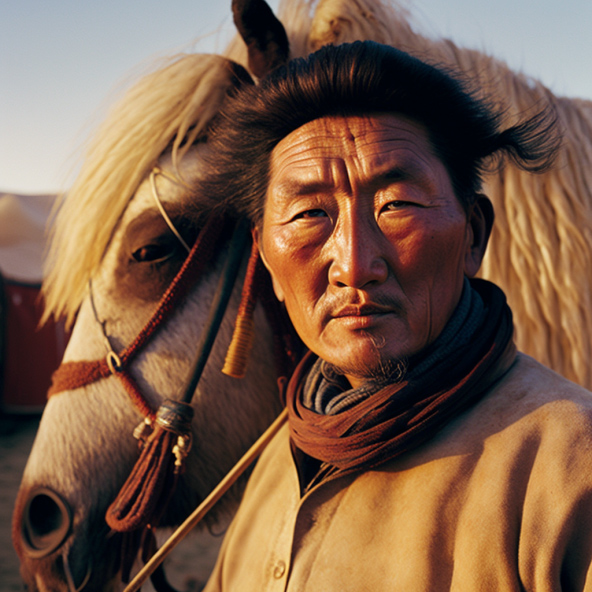
Genghis Khan, born Temujin in 1162, was the founder of the Mongol Empire and is considered one of the greatest military geniuses in history. He was known for his brutal tactics and the speed with which he could mobilize his armies. But one of his lesser-known legacies is his genetic impact on the world.
Genghis Khan had many wives and concubines and was estimated to have had at least 11 children. His lineage spread far and wide through his sons and their descendants. In 2003, scientists conducted a genetic analysis of a large sample of men from Central Asia, the area where the Mongol Empire originated. They found that one in 200 men shared a Y chromosome with Genghis Khan, indicating direct descent. This means that there are approximately 16 million men alive today who are direct descendants of the conqueror.
The Leaning Tower of Pisa

The Leaning Tower of Pisa is an iconic architectural feat located in the town of Pisa, Italy. This historic bell tower was built in the 12th century as part of the city's cathedral complex, and it has earned worldwide fame for its distinctive tilt. Interestingly, the tower was never intended to lean in this way - it was actually the result of a construction mistake.
When the tower was being built, workers quickly realized that the ground was much softer and unstable than they had anticipated. This caused the foundations of the tower to sink unevenly, leading to the gradual lean that we see today. Despite attempts to correct the tower's lean during construction, the problem persisted, and it has become one of the most famous quirks of the tower.
Native American Royalty Visited the British Crown

In the early 18th century, Native American tribes along the eastern coast of North America had complex relationships with European colonizers. Some tribes allied with the colonizers while others resisted their encroachment on their traditional lands. One significant event in this complex history occurred in 1710 when four Native American leaders traveled to Britain to meet with Queen Anne. These leaders included four Mohawk Kings from the Iroquois Confederacy’s Five Nations and leaders from the Algonquian peoples.
The significance of this event lies in the fact that it represents an early effort at diplomacy between Native American tribes and European powers. It suggests that there were avenues for peaceful relations and negotiation in this fraught historical period. The visit of the Native American leaders to Britain is also notable for highlighting the rich cultural traditions and diplomatic protocols of Native American societies.
No One Had Jobs in Sparta

The Spartans were a civilization renowned for their military prowess and their unique way of life. Ancient Sparta was widely known for being an incredibly wealthy country, which was primarily due to their conquest and control over the neighboring Helots.
One interesting fact about Sparta was that they had an education system that was highly regimented and focused on producing elite warriors. From a young age, boys were taken away from their families and placed in military schools. They were trained to be physically fit and mentally tough, and were taught combat skills such as wrestling, boxing, and archery. Spartans were so wealthy, no one had to work...except the Helots
Egyptian Fly Catchers

Ancient Egypt is famous for its impressive architecture, art, and sophisticated civilization that arose along the banks of the Nile River more than 5000 years ago. Despite their many accomplishments, the Egyptians still had to deal with one pesky problem: flies. The hot, humid climate of the region meant that flies were abundant, and they could spread diseases and cause all kinds of nuisances.
To tackle this issue, the Pharaohs came up with a rather unconventional solution: they would use their servants as flycatchers! This involved coating the servants with a sticky substance, usually honey or a mixture of resin and oils, which would attract the flies to them. The servants would then catch and kill the flies, keeping them away from the Pharaohs and their entourage.
Johnny Appleseed was a real person!

Johnny Appleseed, also known as John Chapman, was an American pioneer who became famous in the late 1800s for spreading apple trees throughout much of the United States. Born in Massachusetts in 1774, Chapman traveled west during the early days of America's frontier expansion. He planted apple seeds and seedlings in numerous locations, notably in Ohio, Indiana, and Illinois.
By the time of his death in 1845, Chapman had planted hundreds of thousands of apple trees, many of which were used for making hard cider. In addition to his contributions to the cultivation of the apple in America, he is also remembered for his humanitarianism: he was known to travel long distances to deliver apple seedlings to families in need, and even reportedly helped to break up a fight between two drunken men by using his own body to shield one of them from being attacked.
George Washington's Janky Teeth

George Washington is famously known as the first President of the United States, but what people might not know is that he is often falsely credited with having wooden teeth. Instead, his dentures were made up of a variety of materials, including gold, lead, and ivory, and a combination of human and animal teeth.
To combat his dental issues, Washington turned to multiple dentists and experimented with various remedies, including having teeth pulled and using dentures. He commissioned several sets of dentures throughout his life, with some made from materials like hippopotamus ivory and cow teeth.
The Tallest Married Couple Were Nearly 8' Tall!

Anna Haining Swan (7'9") and Martin Van Buren Bates (7',11") who were nicknamed the "Giantess" and the "Kentucky Giant" respectively, were the tallest married couple ever recorded in history. They were both born in the middle of the 19th century and were renowned circus performers and attractions in their time.
When Swan gave birth to their first child on January 18, 1879, it was a medical marvel. At birth, the baby boy weighed 22 pounds, making him the largest baby ever recorded at that time. This sparked international media attention, and newspapers and journalists from around the world flocked to see this unusual family.
 Author
Ron Winkler
Last Updated: May 31, 2025
Author
Ron Winkler
Last Updated: May 31, 2025